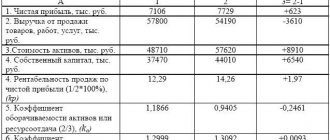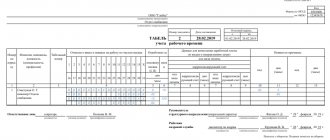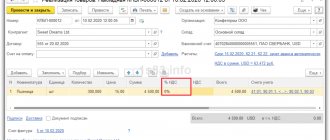Home / Bankruptcy / Bankruptcy of legal entities
Back
Published: 05/22/2020
Reading time: 5 min
0
210
The bankruptcy procedure for a legal entity or individual is quite complex, since within its framework various activities are carried out aimed at satisfying the requirements and interests of all participants in the bankruptcy case. Arising debts and obligatory payments deserve special attention.
- Concept and types of current debt payments
- Registered debt and payments thereon
- The procedure for repaying current and register payments in case of bankruptcy Repayment of current payments
- Payments for registered debts
Dear readers! To solve your problem, call hotline 8 or ask a question on the website. It's free.
Ask a Question
Concept and types of current debt payments
The most common today are current and register payments for debts.
In accordance with Part 1 of Article 5 of the Federal Law “On Insolvency (Bankruptcy)”, current payments mean such monetary and other obligations, as well as requirements aimed at paying severance pay or wages for those persons who interacted with the debtor on the basis of a concluded employment contract. agreement. In addition, current payments in accordance with the provisions of this article also include mandatory payments to tax authorities and state and non-state funds, if they must be made after the date the court accepted for consideration the application to declare the debtor financially insolvent.
If the debtor company has creditors who supplied goods or provided services after the commencement of the procedure for declaring such a company bankrupt, then payments on the claims of such creditors will also apply to current payments.
The main current payments during bankruptcy proceedings include:
- payments aimed at reimbursement of severance pay to employees who terminated their employment relationship with the debtor company;
- payment of wages to employees , labor relations with whom are maintained;
- funds that are used to pay legal costs and expenses , as well as to pay remuneration to the arbitration manager and the persons involved by him in the implementation of the duties assigned to him in conducting the bankruptcy process;
- utility services for the company's property fund;
- payments for used communication services or advance payments under concluded communication contracts;
- payment of monthly installments under previously concluded rental and leasing agreements;
- interest-type payments in relation to concluded loan agreements , if such agreements were concluded after the procedure for declaring the debtor legal entity financially insolvent began;
- compensation payments in order to repay the losses caused or implement the applied liability measures in the event of various types of financial violations;
- payment for time-consuming services , for example, for the responsible storage of property or for maintaining company accounting records.
https://youtu.be/iRKvBonMBFQ
What is bankruptcy of a legal entity?
Bankruptcy of a legal entity is a legally established procedure, through which the organization is released from obligations to creditors. To begin the process of declaring an enterprise insolvent, its owner or director is required to apply to an arbitration court.
There are certain rules and procedures for such treatment, all of them are prescribed in the Federal Law of the Russian Federation No. 127 or are applied on the basis of Resolutions of the Plenum of the Armed Forces of the Russian Federation. So, the process begins with drawing up a claim and submitting it to the Arbitration. The claim is accompanied by documents confirming the company’s inability to bear responsibility for its financial obligations.
These include debts to other legal entities, non-payment of wages, and lack of taxes to the Federal Tax Service. The creditor may exercise the right to file a claim. The application is accepted only if it complies with established legal standards. You can go to court only if there is a significant delay in payments and if the amount of debt for bankruptcy of a legal entity meets the requirements.
https://youtu.be/QBtdmU-B7wM
After accepting the application, the potential bankrupt goes through five mandatory procedures:
- Observation. The state of the company's finances is monitored by specially selected persons. Accounting documentation, assets, liabilities are studied and checked, a report is drawn up, based on which the court decides to move to the next stage in the bankruptcy procedure.
- Health improvement. If the company’s financial situation can be improved for the better, then the company’s management is offered to go through a recovery procedure. The enterprise is provided with benefits for obtaining loans and selling goods and services.
- External control. If the situation cannot be resolved, management of the company is transferred to an external manager. He monitors the process of drawing up the liquidation balance sheet and negotiates with creditors.
- Competition proceedings. At this stage, the company's property is sold at auction. The funds received are used to pay off the debt.
- Peaceful agreement. It is possible to reach a peace agreement and terminate the bankruptcy procedure at any stage. The main condition is an agreement between the creditor and the debtor.
Important! If an enterprise is liquidated immediately after being declared bankrupt, the legal entity is offered to go through a simplified version of the described procedures. If the company does not have the funds to repay the debt to all creditors, the remaining outstanding portion is written off.
Registered debt and payments thereon
In addition to current payments, the debtor legal entity may also have register payments, which are mandatory in the event of register debts.
Registered payments for debts in accordance with the requirements of Federal Law No. 127-FZ “On Insolvency (Bankruptcy)” are considered to be those payments that arose from debts incurred by the debtor company before the start of the bankruptcy process. Creditors in respect of whom there are such debts are bankruptcy creditors and are directly involved in all the main events of the bankruptcy procedure, for example, by casting their vote when voting at meetings of creditors.
Repayment of registered debt by making registered payments is the main goal of the procedure for declaring the debtor financially insolvent, that is, bankrupt. It should be understood that if the debt arose for current mandatory payments, but before the introduction of procedures to recognize the debtor as financially insolvent, then they will also apply to registered debts, in relation to which a special repayment schedule should be applied.
Order of satisfaction
Since the obligation to transfer personal income tax to the tax agent is derived from the receipt of income of the citizen-taxpayer and is fulfilled simultaneously with the payment of income to the citizen, it cannot be classified in a different order of satisfaction.
This approach, set out in clause 8 of the Review, was previously established in relation to the personal income tax withheld when paying wages, severance pay, remuneration to the authors of the results of intellectual activity (clause 41.1 of the Resolution of the Plenum of the Supreme Arbitration Court of the Russian Federation dated July 23, 2009 No. 60) and subject to inclusion in the second stage of register or current payments, depending on the withholding of tax amounts before or after the initiation of bankruptcy proceedings.
At the same time, the Supreme Court of the Russian Federation, in the considered paragraph of the Review, drew attention to the fact that tax can also be withheld when paying other income that is not listed as a first- or second-priority requirement in paragraph 4 of Art. 134 of the Bankruptcy Law. In this case, the tax withheld, for example, when paying remuneration under a work contract, is subject to accounting as part of the third stage of the register of creditors' claims.
At the same time, the Supreme Court of the Russian Federation indicated that penalties and fines for failure to transfer to the budget the personal income tax withheld when paying income before the initiation of bankruptcy proceedings are taken into account separately as part of third-priority payments, since the delay committed by the debtor in fulfilling the duties of a tax agent constitutes a separate offense (clause 9 of the Review). Accordingly, the claims arising from such an offense must be reflected in the register of creditors' claims based on the general rules on the order of satisfaction of obligatory payments: as part of the third priority with satisfaction after repayment of the principal amount of debt and interest due (Determination of the Armed Forces of the Russian Federation dated December 25, 2015 No. 303- ES15-13210 in case No. A04-9392/2014).
The procedure for repaying current and register payments in bankruptcy
The repayment of existing debts, regardless of whether we are talking about current or registered ones, has its own procedure, which is provided for by the provisions of the current legislation on declaring legal entities-debtors financially insolvent. The arbitration manager, together with the voting creditors of the company (bankruptcy creditors and collaterals who have renounced the right to sell the collateral in order to primarily repay debts on obligations to them), creates a schedule for making such payments. After such a schedule is developed, it is approved within the framework of a specially held meeting of the arbitration court.
Repayment of current payments
First of all, current payments are repaid in order to prevent an increase in existing debt, as well as to ensure, from the point of view of the law, the rights of those persons who may suffer from non-payment of this remuneration. Payments are made in the following order:
- Initially, payments are made for alimony obligations . Also, first of all, payments are made for the costs incurred as part of the bankruptcy case (these include payment of state fees of various types, funds allocated for remuneration to persons involved in the bankruptcy procedure, etc.). As part of the current payments, first of all, payments are also made to the arbitration managers hired to conduct the case, as well as the transfer of funds for the publication of materials devoted to certain bankruptcy processes in the organization (publication is carried out in specially accredited media, as well as in the Unified Federal bankruptcy register);
- the next step is the payment of severance pay to those employees with whom the employment relationship was terminated . Moreover, in this case, only those severance payments that were generated after the introduction of one of the bankruptcy procedures are subject to payment. If the employment relationship was terminated before the start of such a process, then the requirements for payment will relate to the register, which means a different payment procedure;
- current payments are completed by paying for utilities, including for property in use (regardless of whether it is residential or non-residential).
Timing should be taken into account
When calculating the period for forced collection of mandatory payments in order to verify the validity of the requirements of the authorized body, it is necessary to take into account that the legislation on taxes and fees provides for different deadlines for collecting debts in court in the event of certain violations committed by the authorized body when performing certain procedures within the framework of extrajudicial collection of mandatory payments ( paragraph 11 of the Review).
At the same time, the RF Armed Forces separately indicate that from the date of the issuance of a judicial act on the introduction of any bankruptcy procedure against the debtor, the debt on mandatory payments, which is registered, cannot be collected forcibly, and therefore the question of the loss of the possibility of forced execution of requirements for the corresponding mandatory payments are subject to clarification by the court on the day of the introduction of the first bankruptcy procedure against the debtor.
In general, the legal position set out in paragraph 11 of the Review was contained in paragraphs 19–25 of the previously effective Resolution of the Plenum of the Supreme Arbitration Court of the Russian Federation No. 25 and was reflected in the established judicial practice (Resolution of the Supreme Arbitration Court of June 29, 2016 No. F01-2156/2016 in the case No. A17-398/2015, AS MO dated October 25, 2016 No. F05-15844/2016 in case No. A41-100742/15).
Bankruptcy supervision procedure
Review of judicial practice on issues related to the participation of authorized bodies in bankruptcy cases and bankruptcy procedures applied in these cases; approved by the Presidium of the Supreme Court of the Russian Federation on December 20, 2016). Foreclosure by authorized bodies of the debtor's funds in the bank in case of bankruptcy under collection orders. If a debt arises on current mandatory payments, the authorized body has the right to make decisions on foreclosure of the debtor's funds in the bank and issue collection orders. The decision to collect debt at the expense of other property of the debtor in the bankruptcy procedure is not made by the authorized body (for more details, see paragraph.
Bankruptcy special account
A bankrupt cannot dispose of accounts and even plastic cards after he has been assigned a new status, but in accordance with Article 138, a special bank account can be opened in his name.
The agreement for such an account states that money from it can only be used to repay:
- Requirements of first and second priority creditors;
- Legal costs;
- Payment for the services of the arbitration manager and the persons involved by him.
Write-offs from the account can only occur at the initiative of the bankruptcy trustee and in the manner and for the purposes described above. If violations are detected, completed transactions will be declared invalid.
Bankruptcy supervision procedure
Review of judicial practice on issues related to the participation of authorized bodies in bankruptcy cases and bankruptcy procedures applied in these cases; approved by the Presidium of the Supreme Court of the Russian Federation on December 20, 2016). Foreclosure by authorized bodies of the debtor's funds in the bank in case of bankruptcy under collection orders. If a debt arises on current mandatory payments, the authorized body has the right to make decisions on foreclosure of the debtor's funds in the bank and issue collection orders. The decision to collect debt at the expense of other property of the debtor in the bankruptcy procedure is not made by the authorized body (for more details, see paragraph.
How are current claims paid?
Funds received as a result of the sale of property in bankruptcy proceedings belonging to a bankrupt organization are credited to a single current account. Other accounts of the company are liquidated. Current requirements are satisfied from the money received from the sale of the property.
When for some reason it is not possible to transfer money to the creditor’s account, it is deposited into the notary’s account. The lender must transfer them to him within 3 years, otherwise they will go to the state budget.
The arbitration manager must make all payments for current payments in bankruptcy proceedings. These payments are made in strict order established by law.
Article 5. Current payments
Satisfaction of creditors' claims for current payments during the procedures applied in a bankruptcy case is carried out in the manner established by this Federal Law. (as amended by Federal Law No. 296-FZ of December 30, 2008) (see text in the previous edition) 4. Creditors for current payments have the right to appeal the actions or inactions of the arbitration manager to the arbitration court considering the bankruptcy case, if such actions or inactions violate their rights and legitimate interests.
(P.
Article 5. Current payments
Satisfaction of creditors' claims for current payments during the procedures applied in a bankruptcy case is carried out in the manner established by this Federal Law. (as amended by Federal Law No. 296-FZ of December 30, 2008) (see text in the previous edition) 4. Creditors for current payments have the right to appeal the actions or inactions of the arbitration manager to the arbitration court considering the bankruptcy case, if such actions or inactions violate their rights and legitimate interests.
(P.
The order of payments in case of bankruptcy of an enterprise
It consists in the fact that current claims should not be included in the register and, accordingly, voted at meetings (when the manager performs actions aimed at this, it is necessary to raise the question of the manager’s improper performance of his duties with all the ensuing consequences). Accordingly, current creditors are not are recognized as persons participating in the bankruptcy case.
Current requirements must be satisfied as they become due. Otherwise, the creditor has the right to apply to the court with demands against the debtor, including demands for foreclosure on the debtor’s property, a statement about the impossibility of achieving the goals of the restoration procedure and its termination, etc.
Satisfaction of creditors' claims for current payments during external administration is carried out in the manner established by the Bankruptcy Law - thus, at first glance, a special regime is introduced for current claims during external administration compared to other procedures. In fact, an analysis of the provisions of Part 2, Clause 2, Article 95 and Clause 4, Article 95 of the Law leads to a conclusion that is entirely consistent with the spirit of the Law and the meaning of regulating the status of current creditors, according to which those current claims that arose before the introduction of the moratorium are subject to the moratorium. external control, and therefore should have been executed, but for some reason they were not executed.
Within the framework of bankruptcy proceedings, the regime of current claims is differentiated for obligations (they are extraordinary) and for obligatory payments (they are subsequent, i.e. they are satisfied from the property remaining after satisfaction of all other claims).
Qualification of claims for payment of insurance premiums
Paragraph 14 of the Review changed the approach to qualifying claims for payment of insurance contributions for compulsory pension insurance, indicating that such payments, due to their special legal nature and purpose, are subject to execution in the regime established to satisfy claims for payment of wages.
It is noteworthy that in force until December 20, 2020, paragraph. 3 clause 41.1 of the Resolution of the Plenum of the Supreme Arbitration Court of the Russian Federation dated July 23, 2009 No. 60 classified claims for payment of insurance premiums accrued before the initiation of bankruptcy proceedings as register requirements of the third stage, and those calculated in connection with the calculation of current wages - to current payments of the fourth stage.
To justify the change in the approach to qualifying claims for payment of insurance premiums, the Armed Forces of the Russian Federation indicated that such payments “are a mandatory component of the costs of hiring labor and a material guarantee of providing insured persons with adequate insurance coverage in order to compensate for wages and other payments and rewards lost by them due to the onset of incapacity for work.”
Thus, according to the newly formulated position of the RF Armed Forces, claims for the payment of insurance premiums that are not current are subject to accounting as register payments of the second priority and do not provide the right to vote at a meeting of creditors in accordance with clause 3 of Art. 12 of the Bankruptcy Law.
In general, the position of the Supreme Arbitration Court of the Russian Federation, set out in the commented Review of Judicial Practice, coincides with the provisions of the Resolution of the Plenum of the Supreme Arbitration Court of the Russian Federation No. 25, which was in force until December 20, 2016, however, some approaches to qualifying and establishing requirements for mandatory payments have undergone changes due to amendments and additions to the Law about bankruptcy. In addition, a number of paragraphs of the Review form new rules that make it possible to simplify the procedure for establishing the requirements of the authorized body (clause 13) and to use tax audit materials in order to prevent artificial debt from being included in the register of creditors’ claims (clause 10).







